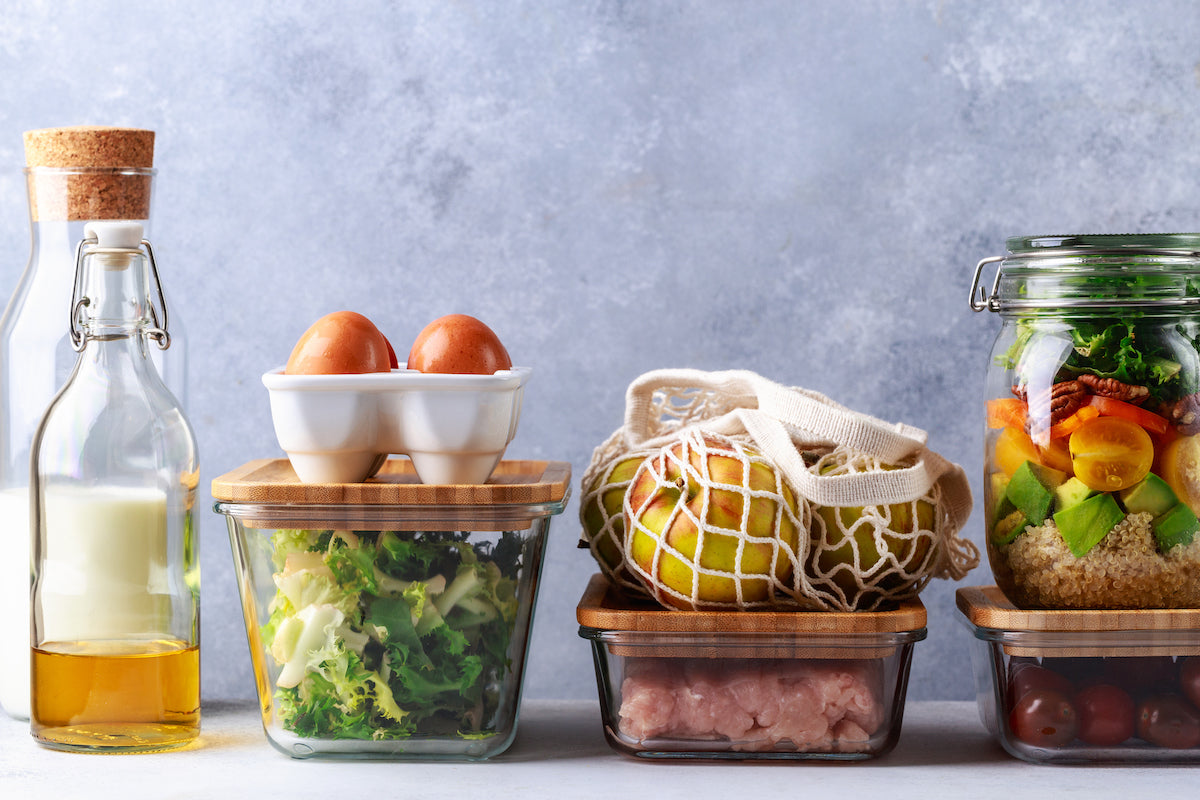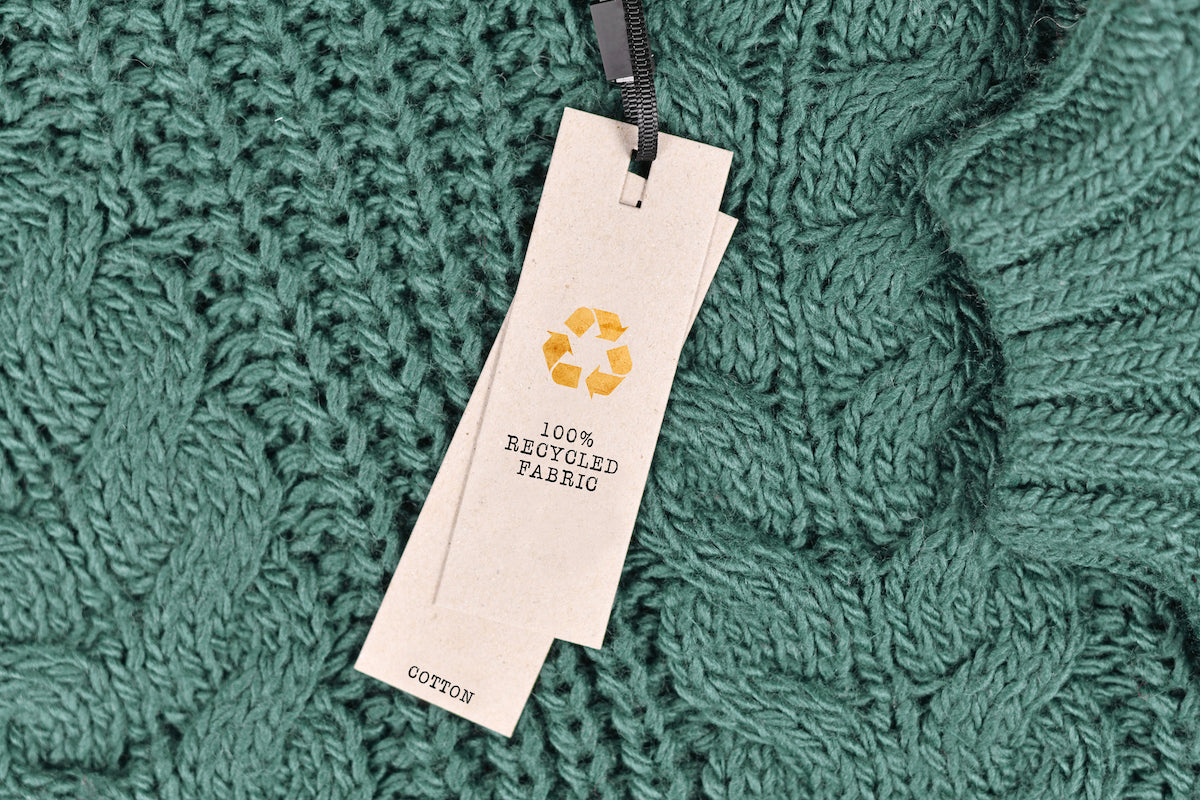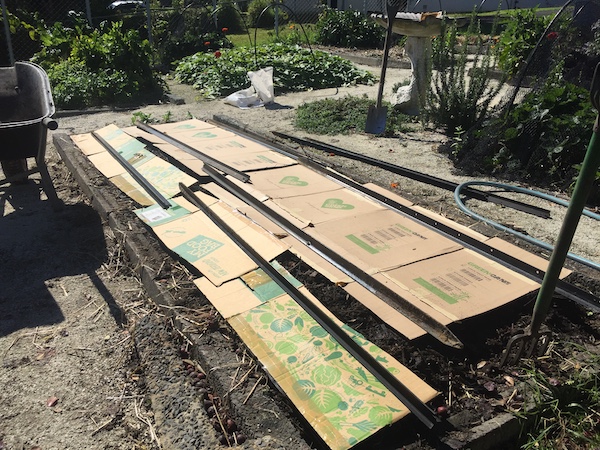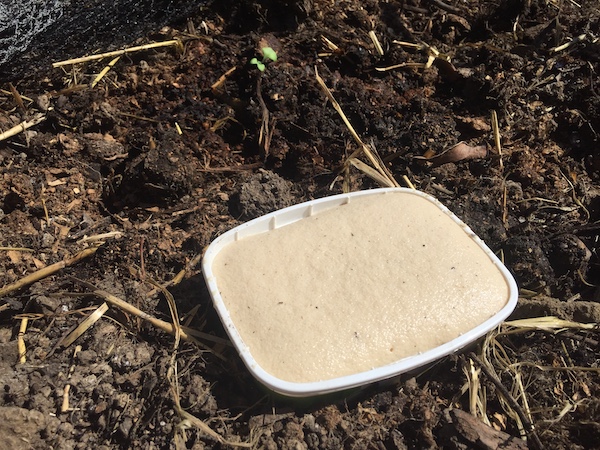In the winter months you’ll no doubt have your beds full of cabbages, caulis, broccoli (those in the South will be able to grow Brussels sprouts too), along with kales, spinach and silverbeet, carrots, beetroot and parsnips, maybe some leeks too. You may also have a bed or two in a green manure crop.
So at this time of year, it’s about enjoying this produce, and planning for the warmer months.
As you eat up a bed of vegetables, rather than leaving it empty with rain compacting it and weeds growing, firstly give it a fork through to aerate it, then add a nitrogen fertiliser like chicken manure or sheep pellets, a general organic fertiliser to add minerals and vitamins, cover with compost or straw and lay some weed matting or cardboard or sacks over the top. This way the worms can have a happy time in there, preparing a super duper soil mix for spring planting.
Next, make sure you have all the seeds you’ll need for sowing in spring. Check how old your seeds are – they may need replacing. You may like to choose different varieties of vegetables each year – we go for heirloom varieties most of the time as they taste much better in our opinion, and you can save the seeds. There are the bigger companies like Kings and Egmont. And smaller ones like Bristol Seeds, Setha’s Seeds, and Italian Seeds Pronto. We recommend keeping seeds in the fridge, so that when you take them out, the change in temperature spurs them into action.
Another good indoor gardening activity is planning crop rotation. Keep your plans each time you rotate so you can refer back to them. Ideally you don’t plant in the same bed for 4 rotations, but in smaller gardens that can be hard to achieve. As long as you do this for the long-term crops like tomatoes and potatoes, kumara and onions, you can rotate leafy greens a bit more often. Again this is ideal, but try and rotate nitrogen-fixing to root crops to fruiting crops to leafy greens and round again.
In this quieter time, you can also look at giving your tools a ‘spit and polish’. Check out this video to see how Rob keeps his tools in good condition.
About 3-4 weeks before you plan to plant, dig in your green manure crops. We pull them out and lay them on the bed, chopping them up as best you can. Then we apply a good amount of lime to help break the material down.
Lime is a good addition to any garden bed and we recommend applying it to the whole garden every two years.
Now for those of you who have outbreaks of guava moth infestation in the summer, winter is a good time to apply Neem Tree granules to the soil around the trunk of affected fruit trees. It can help reduce the population of larvae of the moth which are overwintering in the soil.
Finally if you can organise it (sometimes it’s tricky getting one crop out before the next one is due to go in), it’s worth setting yeast traps (stir one teaspoon of white sugar and one teaspoon of dried yeast into one cup warm water – set container into soil) into a garden bed before you actually plant in it. Rather than catching them after you’ve planted and they’re nibbling on your lovely little seedlings, this way they might be gone before planting. Imagine that!
-----
Organic Edible Garden’s vision is to make organic edible gardening achievable for everyone. Visit their website for Getting Started videos, and regular blog posts to find out what to do in your edible garden.
Read more

Plastic is such a common and useful material in everyday life, it’s often hard to be aware of just how much we consume of it. And because we all need to eat and drink, the kitchen is the room where...

You’re mostly nailing the recycling in your kitchen, but what about in your closet? While the most sustainable garments are the ones already in your wardrobe, at some point in the future, you’re l...










